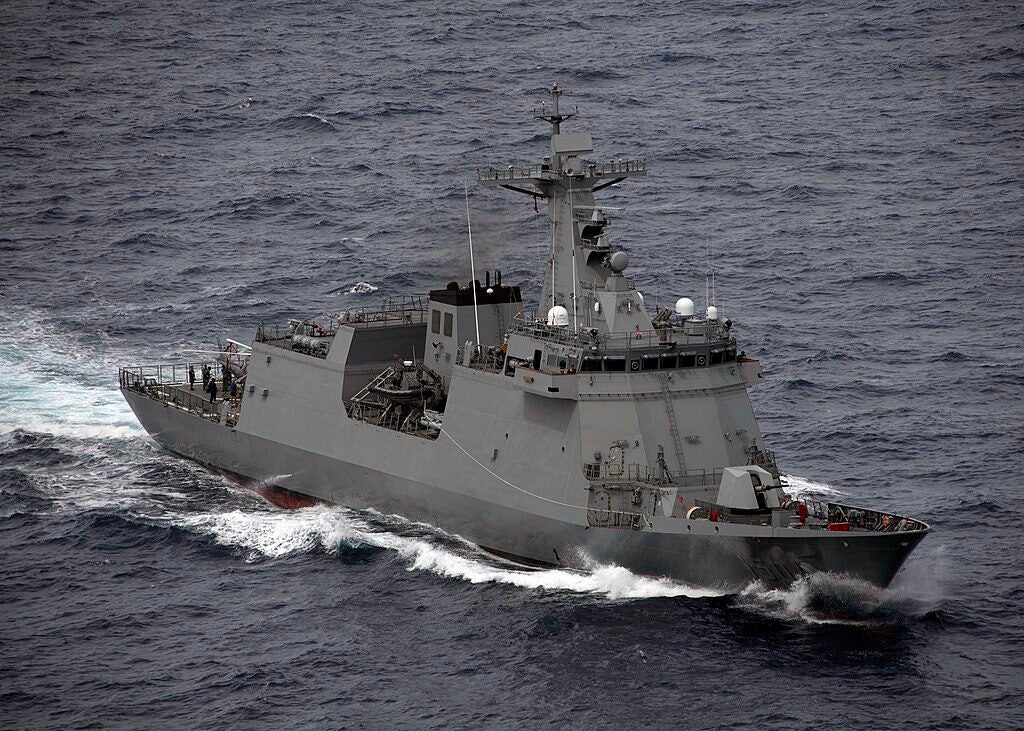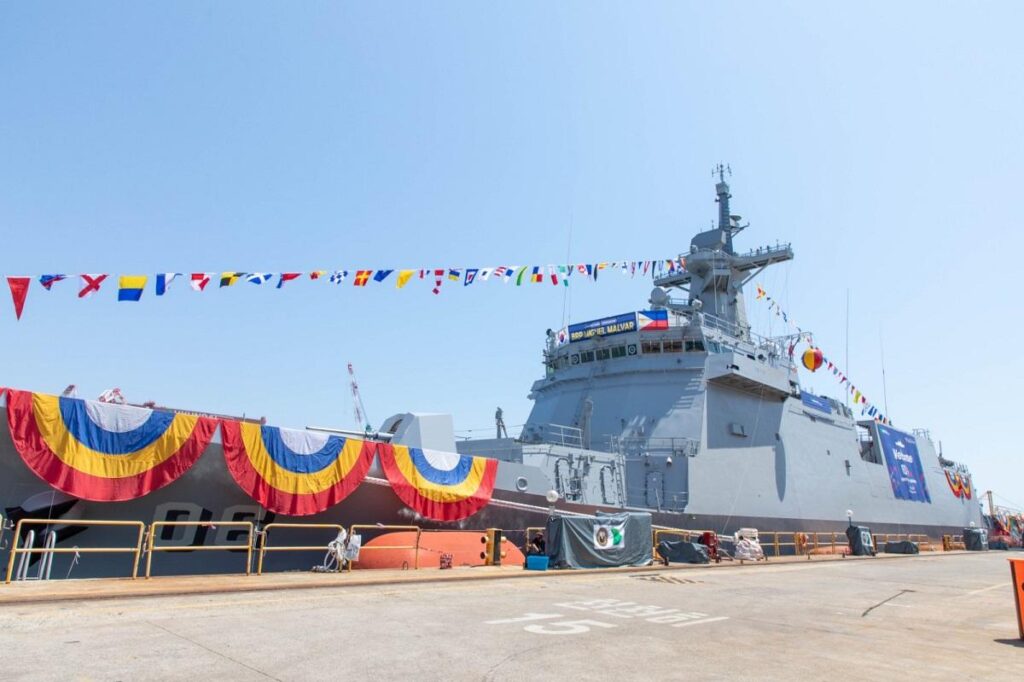Countering Aggression, Philippines Continues Naval Modernisation Program
The recent launch of a new corvette early last week marks an increasingly defensive posture from Manilla. The BRP’s Miguel Malvar, named after a famed Philippine revolutionary general, was launched on 18 June at the South Korean shipyard in Ulsan. It is the first of two ships to be completed by Korean company HD Hyundai Heavy Industries (HHI), one of the largest global ship manufacturers.
The vessel is reported to be 118 meters long, with a cruising speed of 15 knots and a range of 4,500 nautical miles. Its capabilities as touted by the Philippines embassy in South Korea will include “anti-ship missile, vertical launch systems, and 3D AESA radar.” Furthermore announced at the ceremony was the equipping of the corvette with the Aselsan Gökdeniz close-in weapon system. The system is capable of firing programmable ATOM smart ammunition, alongside high-explosive incendiary and target practice rounds from its 35mm twin barrels.
These weapons will be tested in sea trials over the coming months leading up to an eventual final delivery of the vessel to the Philippine Navy in early 2025. The order for the two corvettes placed in 2021 is part of a wider attempt under the Philippines AFP Modernisation Program to enhance the nation’s security. Overall HHI has secured 10 orders from the Philippines over the last 10 years, numbering 10 naval vessels (2 frigates, 2 corvettes, and 6 off-shore patrol vessels).

The reasoning behind the Philippines’ increasing naval modernization efforts stems from the increasing geopolitical competition between China and other states within the South China Sea. Animosity and outright violence has persisted between the two nations over the Second Thomas Shoal, located 105 nautical miles west of the Philippines. Most recently this has seen Chinese coast guard vessels blocking attempted resupplying of a beached Philippine vessel which operates as an outpost on the Shoal.
Ferdinand Martin Gomez Romualdez, Philippines Speaker of the House of Representatives, said: “The South China Sea is an entire area and trillions of dollars [of trade] pass through that area. Do we really want to have one country to control that passageway? I don’t think so.”
Generally speaking, the naval modernization carried out by Manilla is part of a broader trend by many Southeast Asian states. Improving naval capabilities for these states is seen as a viable deterrent towards possible conflict within the South China Sea, allowing them to maintain territorial integrity and trade benefits with China.

